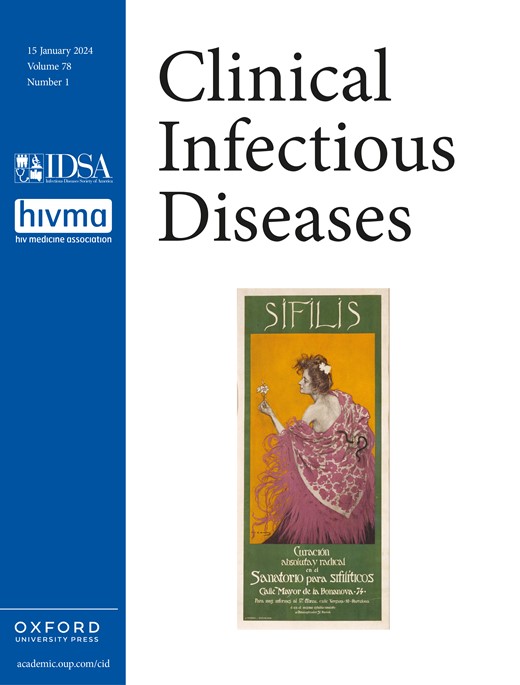病毒特异性t细胞疗法预防和治疗移植后巨细胞病毒感染:范围综述
IF 8.2
1区 医学
Q1 IMMUNOLOGY
引用次数: 0
摘要
背景巨细胞病毒(CMV)感染是造血干细胞移植(HSCT)和实体器官移植(SOT)后的主要并发症。病毒特异性t细胞(VST)已被用于预防和治疗巨细胞病毒感染。我们进行了一项范围综述,对现有文献进行分类和定性。方法与专业图书馆员合作进行系统检索。纳入标准是在HSCT和SOT患者中使用CMV-VST进行预防或治疗。主要的排除标准是病例报告和少于5例的系列。数据库从开始查询到2024年5月31日。在2587篇确定的摘要中,92篇文章进行了全文审查,67篇研究进行了最终数据提取。结果大多数研究是在HSCT人群中进行的。采用CMV- vsts预防时,CMV感染率为28% (IQR 14-44)。HSCT患者的非难治性和/或耐药性(R/R)感染和R/R感染的缓解率分别为98% (IQR 70-100)和70% (IQR 56-88)。4项研究纳入了伴有R/R感染的SOT患者,结果显示有效率为15-64%。包括供体/受体血清状态和抗病毒药物使用在内的变量报告各不相同,并且使用了CMV感染和反应的各种定义。CMV-VSTs耐受性良好,不良事件报道最少。结论cmv - vst更常用于HSCT患者,而SOT患者的数据有限,关键变量的差异报告排除了推断。未来的研究应考虑标准化的注册表,并进一步关注最佳剂量、时间和与并发抗病毒药物的相互作用。本文章由计算机程序翻译,如有差异,请以英文原文为准。
Virus-specific T-cell therapy for prophylaxis and treatment of cytomegalovirus infections after transplantation: a scoping review.
BACKGROUND
Cytomegalovirus (CMV) infection is a leading complication following hematopoietic stem cell transplant (HSCT) and solid organ transplant (SOT). Virus-specific T-cells (VST) have been used for the prophylaxis and treatment of CMV infections. We conducted a scoping review to catalogue and characterize the existing literature.
METHODS
Systematic searches were performed in collaboration with an expert librarian. Inclusion criterion was the use of CMV-VST for prophylaxis or treatment in HSCT and SOT patients. Major exclusion criteria were case reports and series with fewer than 5 cases. Databases were queried from inception to May 31, 2024. Of the 2587 identified abstracts, full text review was performed on 92 articles, and 67 studies underwent final data extraction.
RESULTS
Most studies were in the HSCT population. The CMV infection rate was 28% (IQR 14-44) when CMV-VSTs were used as prophylaxis. Response rates for non-refractory and/or resistant (R/R) infections and R/R infections in HSCT patients were 98% (IQR 70-100) and 70% (IQR 56-88), respectively. Four studies included SOT patients with R/R infections, demonstrating a response rate of 15-64%. Variables including donor/recipient serostatus and antiviral use were heterogeneously reported, and various definitions of CMV infection and response were used. CMV-VSTs were well-tolerated with minimal adverse events reported.
CONCLUSION
CMV-VSTs are more commonly used in HSCT patients with limited data in SOT patients and differential reporting of key variables preclude extrapolation. A standardized registry should be considered for future studies with additional focus on the optimal dosing, timing, and interaction with concurrent antivirals.
求助全文
通过发布文献求助,成功后即可免费获取论文全文。
去求助
来源期刊

Clinical Infectious Diseases
医学-传染病学
CiteScore
25.00
自引率
2.50%
发文量
900
审稿时长
3 months
期刊介绍:
Clinical Infectious Diseases (CID) is dedicated to publishing original research, reviews, guidelines, and perspectives with the potential to reshape clinical practice, providing clinicians with valuable insights for patient care. CID comprehensively addresses the clinical presentation, diagnosis, treatment, and prevention of a wide spectrum of infectious diseases. The journal places a high priority on the assessment of current and innovative treatments, microbiology, immunology, and policies, ensuring relevance to patient care in its commitment to advancing the field of infectious diseases.
 求助内容:
求助内容: 应助结果提醒方式:
应助结果提醒方式:


